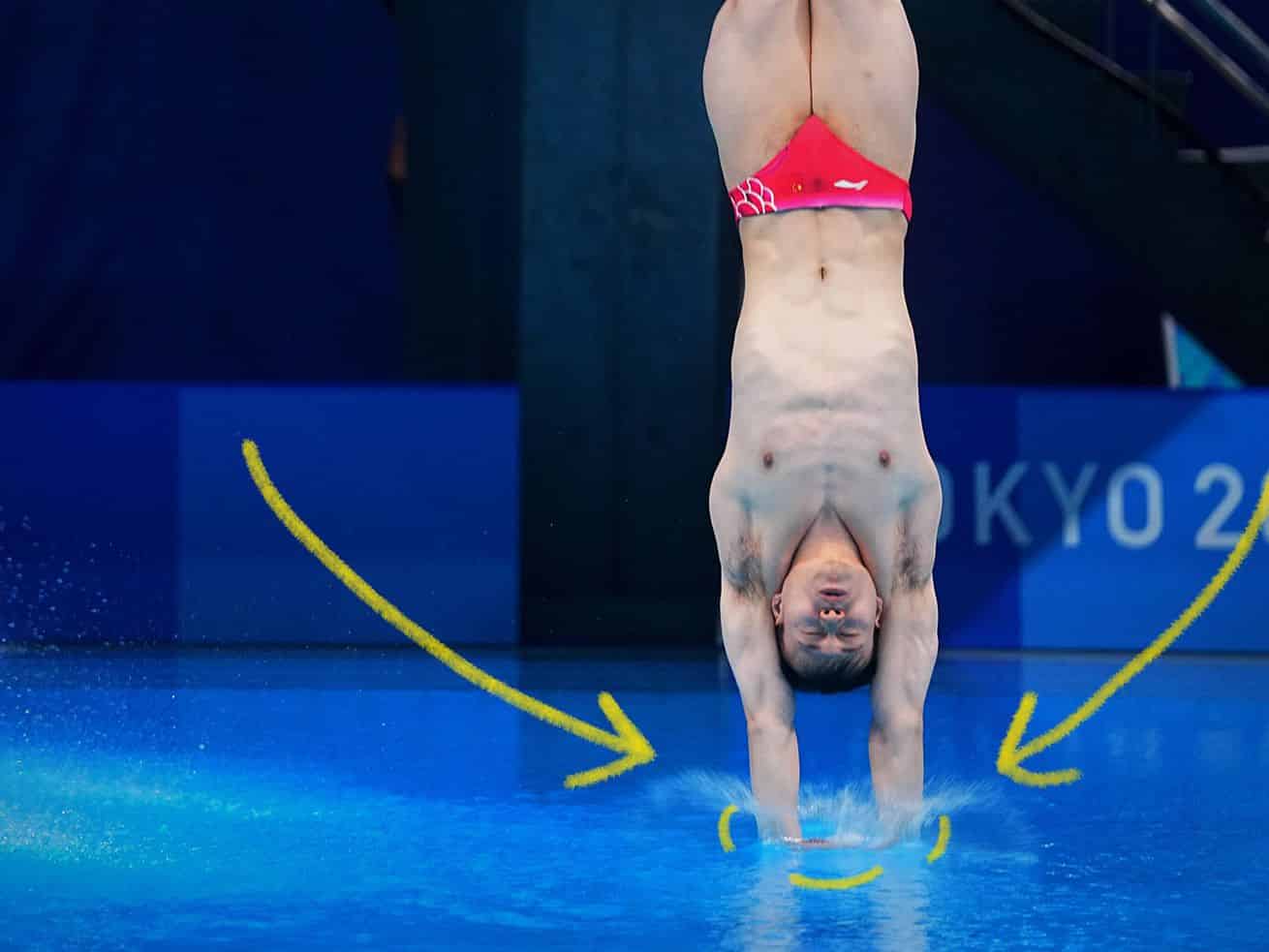We talked to Team USA’s head diving coach to find out.
Elegant Olympic dives fly by in a matter of seconds. Because of that, it’s hard to know what to look for when you try to judge the sport from your couch. One thing that’s easy to see, though? The splash.
If you’ve watched any Olympics diving coverage, you may have noticed the splashes athletes make are tiny. Divers spend years training to perform with a minimal splash, in the same way gymnasts train to stick their landings.
In this video, Team USA’s head diving coach Drew Johansen explains the three major components he uses to guide his athletes toward smaller splashes.
- The above water: As divers approach the water, they must extend their body into a rigid, straight line. Importantly, they must put their hands one on top of the other with flat palms, to create what’s called a rip entry (named because it sounds like a piece of paper is being ripped as the diver hits the water).
- The swim: After divers hit the water, they must swim their arms out while keeping their lower body rigid. This helps disperse some bubbles.
- The underwater save: As divers submerge, they pike (or fold in on themselves), trying to catch more bubbles with their bodies. This helps break big bubbles into smaller bubbles, making them less splashy when they rise to the surface.
When performed correctly, a perfect dive will use all these components to make a tiny splash.
And while the sport of diving isn’t all about splashes, a small splash is the perfect punctuation to a job well done.
You can find this video and all of Vox’s videos on YouTube.
Author: Edward Vega
Read More



